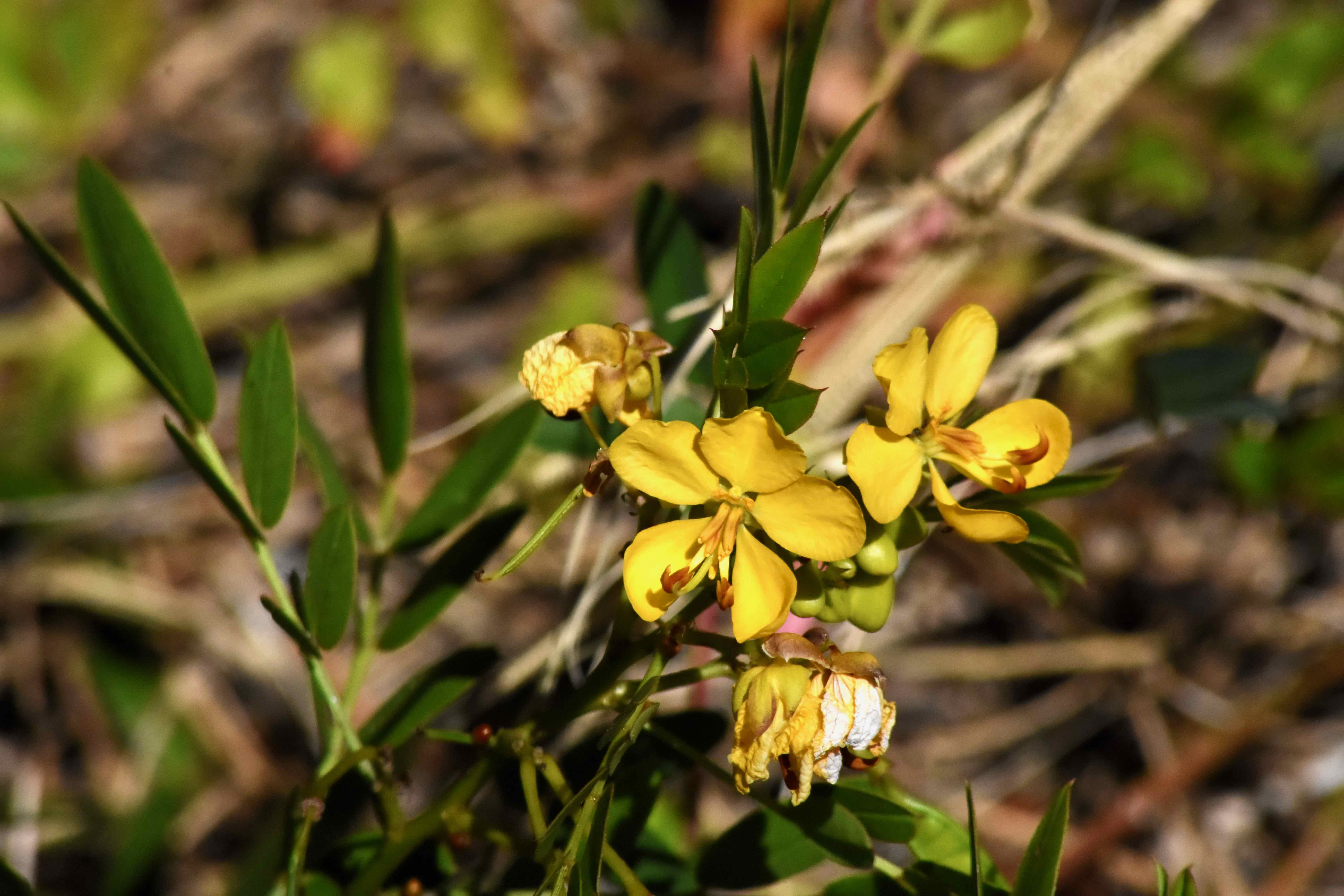
Bahama Senna, photographed at J.N. "Ding" Darling National Wildlife Refuge, Sanibel, Lee County, in October 2016. Others at Bill Baggs Cape Florida State Park, Key Biscayne.
The bad news for Bahama senna, Senna mexicana, is that it is teetering on the edge of extinction in the wild, at least in the United States. The better news is that it's widely cultivated for use in landscaping, particularly in butterfly gardens, making its survival a little more certain.
And yes there is a bit of a geographic contradiction between the common name and it's scientific, made worse by the fact that Bahama senna isn't native to Mexico. We looked. We cannot find an explanation.
Be that as it may, Bahama senna is a Florida native. It is only found in Florida among the 50 states and only in a small slice of the Peninsula — the pine rockland habitats of Miami-Dade County and the upper Keys. It's also found in the wilds of the Bahamas and in Cuba.
The problem for Bahama senna is that pine rockland habitats are disappearing; less than two percent of what was once pine rockland remains in a natural state. Bahama senna has threatened status under state law; the Institute for Regional Conservation considers Bahama senna imperiled. How strong the populations might be in the Bahamas and on Cuba could not be determined through our research.
Bahama senna is a small, woody shrub that grows to to about two to four feet tall, with a spread of about three to six feet across. There are some references that say it can reach 12 feet tall, but the plants we've seen are much smaller. It has compound leaves, each with as many as 10 pairs of long and narrow leaflets.
The flowers are large, bright yellow, with five petals and two prominent stamen. They form in large clusters near the ends of branches. Bahama senna blooms year round. The flowers give way to long, flat pods that are full of seeds. The plant will grow in full sun or partial shade and is drought tolerant. It is a perennial.
As we said, Bahama senna is used in landscaping throughout South Florida, especially by butterfly gardeners. It is a host plant for the cloudless sulphur, orange barred sulphur and sleepy orange sulphur butterflies. Which seemingly would make Bahama senna vulnerable to being stripped bare by a bunch of ravenous caterpillars. But not so fast. Bahama senna has a special gland at the base of each leaf called an extrafloral nectary that attracts hungry ants looking for a sweet snack. In return for the food, the ants defend Bahama senna against the caterpillars and other herbivores looking to munch on the plant. The defense isn't perfect but it does improve the odds in favor of the plant. According to a study by three South Florida scientists, plants protected by ants tend to establish quicker, grow larger, put out larger floral displays and attract more pollinators than plants without.
Other names for Bahama senna include Mexican senna and Chapman's wild sensitive plant. As to the last name, we hould note that there is a subspecies known scientifically as M s var. chapmanii. Bahama senna is a member of Fabaceae, the pea family.
J.N. "Ding" Darling National Wildlife Refuge
Bill Baggs Cape Florida State Park



